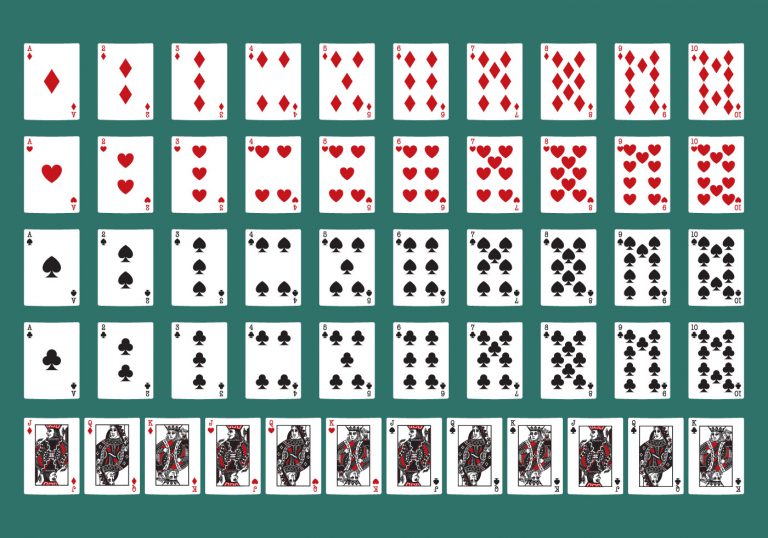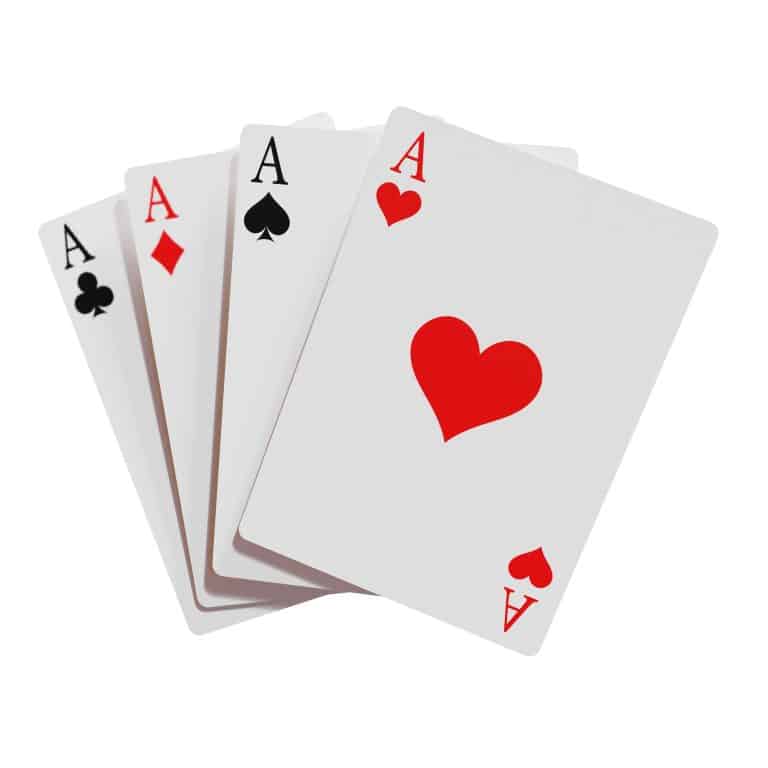Poker is one of the most popular card games in the world, played by millions of people in homes, casinos, and online. A key component of any poker game is the deck of cards used to play. While many players may not pay much attention to the type of cards they use, the truth is that using the right type of cards can make a big difference in the game.
In this blog post, we will discuss the different types of poker cards that are available, including bridge size, poker size, jumbo index, and more. We will explore the advantages and disadvantages of each type of card and provide recommendations on which type of card may be best suited for different types of games or players. By the end of this post, you will have a better understanding of the various types of poker cards and how to choose the right one for your game.
Bridge size cards
Bridge size cards are a type of poker card that are slightly narrower than traditional poker size cards. The dimensions of bridge size cards are approximately 2.25 inches by 3.5 inches, compared to the 2.5 inches by 3.5 inches of poker size cards.
One of the primary advantages of using bridge size cards is that they are easier to shuffle and deal for players with smaller hands. This makes them a popular choice for games that involve a lot of shuffling and dealing, such as bridge, which is where the name “bridge size” comes from. Additionally, the smaller size of bridge cards means that players can hold more cards in their hands, which can be an advantage in games where hand size is a factor.
However, there are also some disadvantages to using bridge size cards. Because they are narrower than poker size cards, the print on the face of the card can be smaller and harder to read for some players. This can be especially challenging for players with poor eyesight. Additionally, because bridge size cards are less common than poker size cards, they may be more difficult to find at some stores or online retailers.
Some popular brands that offer bridge size cards include Bicycle, Bee, and KEM. If you are playing bridge, or if you have smaller hands and find poker size cards difficult to shuffle or deal, bridge size cards may be a good choice for you. However, if you have poor eyesight or find the print on bridge size cards too small, you may want to consider using poker size cards instead.
Poker size cards
Poker size cards are the most common type of poker card used in games. They are slightly wider than bridge size cards and have dimensions of approximately 2.5 inches by 3.5 inches.
One of the primary advantages of using poker size cards is their popularity and widespread availability. Because they are the most common type of card used in poker games, they are widely available at stores and online retailers. This makes them an easy choice for players who want a reliable and easily obtainable deck of cards.
Another advantage of using poker size cards is that the larger size of the cards makes the print on the face of the card easier to read for many players. This can be especially important for games that involve a lot of reading and interpreting cards, such as Texas Hold’em or Seven Card Stud.
However, the larger size of poker size cards can also be a disadvantage for some players. For example, players with smaller hands may find it more difficult to shuffle or deal these cards. Additionally, because they are wider than bridge size cards, players can typically hold fewer cards in their hands, which may be a disadvantage in games where hand size is important.
Some popular brands that offer poker size cards include Bicycle, Copag, and Modiano. If you are looking for a reliable and widely available deck of cards, poker size cards are likely your best bet. However, if you have smaller hands or find the print on poker size cards too large, you may want to consider using bridge size cards instead.

Jumbo index cards
Jumbo index cards are a type of poker card that feature larger-than-normal print on the face of the card. This makes them a popular choice for players with poor eyesight or for games played in low-light conditions.
The index of a card refers to the number and suit that are printed on the upper left and lower right corners of the card. Jumbo index cards feature larger-than-normal print on these corners, making them easier to read from a distance or in low-light conditions.
One of the advantages of using jumbo index cards is that they can make gameplay faster and more efficient. Because the print on the card is larger, players can quickly and easily identify the number and suit of a card without having to spend extra time squinting or straining to read it.
However, there are some disadvantages to using jumbo index cards as well. For example, because the index is larger, the actual face of the card may be slightly smaller than normal. Additionally, jumbo index cards may be more difficult to shuffle or deal for players with smaller hands, as the larger index can make the deck feel bulky or unwieldy.
Some popular brands that offer jumbo index cards include Bicycle, Copag, and Modiano. If you or your fellow players have poor eyesight or if you frequently play in low-light conditions, jumbo index cards may be a good choice for you. However, if you find the larger index to be unwieldy or difficult to shuffle, you may want to consider using regular index cards instead.
Miniature cards
Miniature cards are a type of poker card that are significantly smaller than standard poker size cards. They are typically around 1.5 inches by 2.5 inches in size, making them much smaller than both bridge size and poker size cards.
One of the primary advantages of using miniature cards is that they are incredibly portable and easy to carry. Because they are so small, players can easily fit them into a pocket or purse, making them a popular choice for travel or outdoor games.
However, the small size of miniature cards can also be a disadvantage. Because they are so small, the print on the face of the card may be difficult to read for some players. Additionally, because they are less common than bridge size or poker size cards, they may be more difficult to find at some stores or online retailers.
Some popular brands that offer miniature cards include Bicycle, Copag, and Modiano. If you are looking for a portable and easy-to-carry deck of cards, miniature cards may be a good choice for you. However, if you find the print on miniature cards too small, you may want to consider using bridge size or poker size cards instead.
Conclusion
There are several different types of poker cards available on the market, each with their own advantages and disadvantages. Bridge size cards are smaller and easier to handle, while poker size cards are more popular and widely available. Jumbo index cards are great for players with poor eyesight, while miniature cards are highly portable and easy to carry. Plastic cards are durable and long-lasting, while custom cards and souvenir cards can add a unique and personalized touch to your games.
Ultimately, the type of poker card that you choose will depend on your personal preferences and playing style. Whether you are a casual player looking for a reliable deck of cards, or a professional player who requires the highest-quality materials, there is a type of poker card that is right for you. So take some time to explore the different options available and choose the deck of cards that best suits your needs and playing style.





